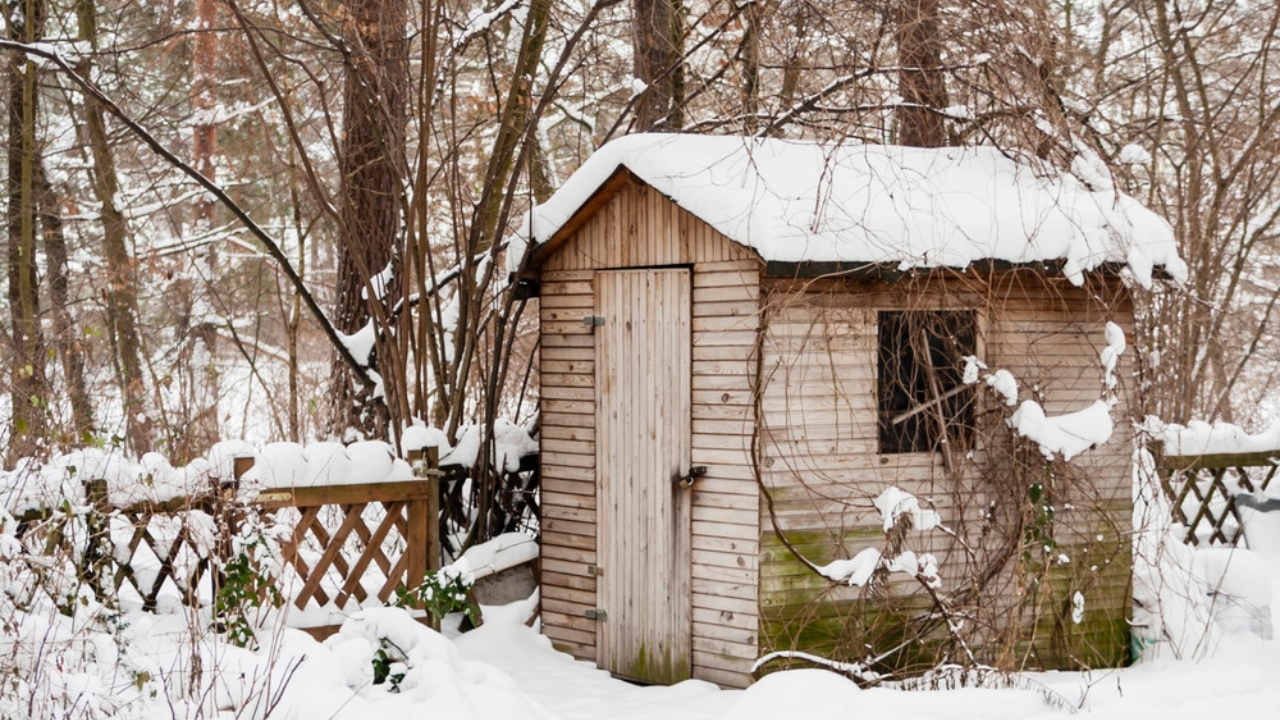5 hacks to avoid a mouldy and damp shed this winter
With the upcoming weather heading our way, we're not out of the woods yet


Despite being fully into 2024, there's no doubt we're still in the midst of winter. There's been some horrid weather recently, with low temperatures and high winds taking over most of the country. Whilst we've covered the 7 garden items you should never keep outside over winter and 4 essential winter garden jobs to help with this, there's one thing that's often forgotten...garden sheds.
With plenty more winter weather forecasted, our garden sheds need to be looked after properly. If not, they can become damp and grow mould, causing them to deteriorate. To help homeowners combat this problem, we spoke to Sam Jenkinson, garden building expert at Tiger Sheds. He shared with us his tips on preventing mould from taking over your garden shed, especially if it's already present.
Before you find out more, do you know about the 6 items you should never keep in your shed over winter?
1. Remove damp items
Mould thrives in moist environments, so it’s important to limit the number of wet items you store in your shed. Make sure to dry bikes, camping equipment or anything else that might be carrying excess water before storing them to keep mould away.
2. Keep air circulating
The air inside a shed can become stagnant and retain a lot of moisture, so there needs to be good air flow to prevent moisture from building up. Leave space around things you’re storing in there, ensuring not to cram the space full. You should also try and store your items on a shelf instead of on the floor to allow for air circulation and reduce the chance of absorption.
If your shed doesn’t have an air vent, to keep the air circulating, open the windows and doors every few days to reduce the build-up of stagnant air.
3. Try and absorb moisture
The air naturally contains water, so you’ll want to reduce the amount of moisture where you can. If your shed has power, you can plug in a dehumidifier to help, or use silica gel packs, rock salt or even cat litter to absorb water in the air over time.
Get all the latest news, reviews, deals and buying guides on gorgeous tech, home and active products from the T3 experts
4. Seal openings
Windows and doors are weak points for drafts, so inspect the inside and outside for any gaps. If any are found, seal them to prevent cold air wafting through, keeping moisture outside the shed and preventing mould forming. Make sure to check the roof felt for any tears too and make any necessary repairs.
5. Insulate and treat
Insulation helps to regulate the temperature of a shed, keeping the space warmer in winter and cooler in summer. Failing to do so can cause furniture to absorb moisture and form mould. Insulation with a reflective surface is more than sufficient to keep the heat inside.
Follow this step with treating your shed, especially as tanalised sheds are better protected against weather and don't require as much maintenance as their untreated counterparts. If you don’t have a pressured treated shed, it’s important to treat your garden building at least once a year. This will help to stop rot and ensure damp and mould won’t develop in your shed.
If you're wanting to find out more, have you seen the 10 gardening jobs I'm carrying out throughout February?

Lizzie is T3's Home Living Staff Writer, covering the latest in smart home, lifestyle and beauty tech. From skincare gadgets to vacuum cleaners, she's your go-to for trends and top recommendations.
When not writing, Lizzie enjoys mooching around Bath, spending time with loved ones, or testing her review units – often during an enthusiastic cleaning spree!